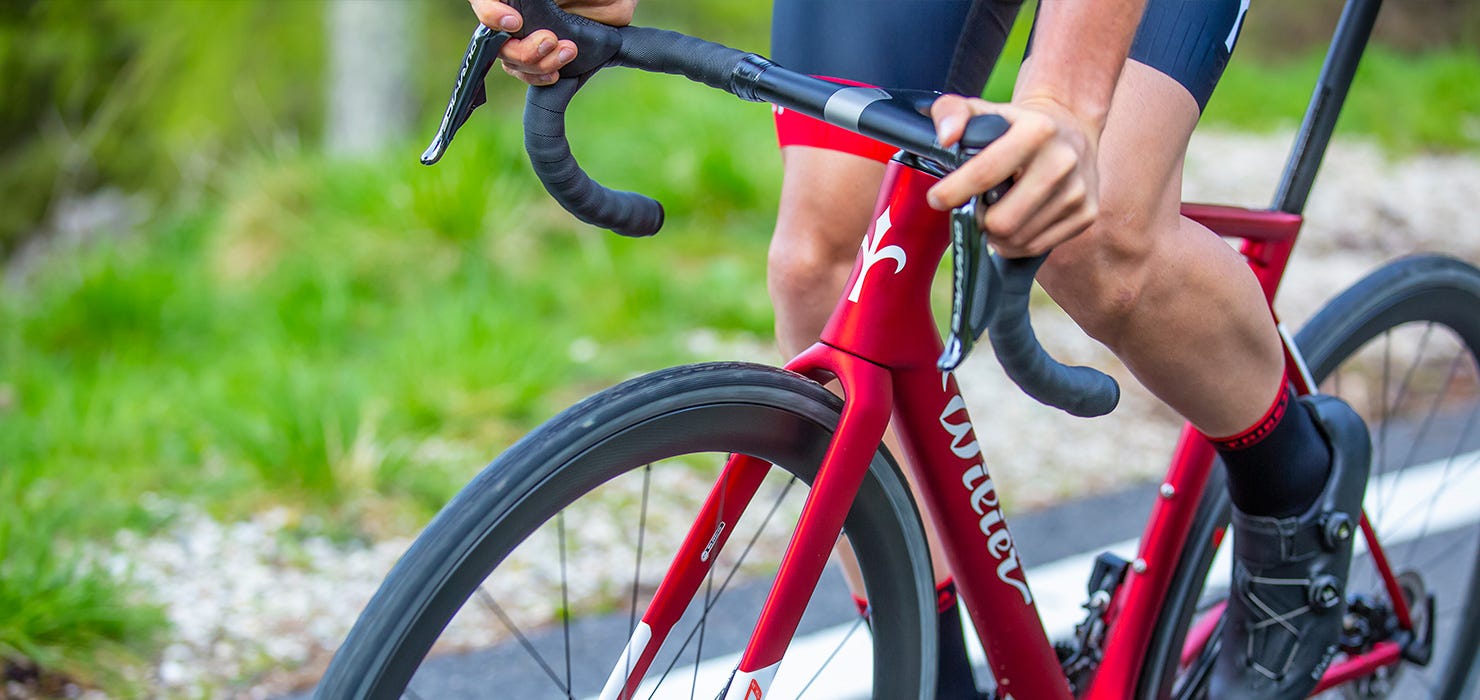Is sweetspot really the best training method for 99%?

Sometimes you can be wrong without even knowing it. You might believe in something 100% and your friends might believe it too, but you can still be completely wrong.
Consider these examples, taken from surveys of the american public…..
58% believe horoscopes are scientific
40% deny evolution involved humans
32% deny the holocaust occurred
20% deny climate change
16% believe the earth is flat
10% believe moon landings were a hoax
Could sweetspot training fall into the same category? This is a topic where my opinion might have changed based on the evidence rather than the claims. btw, why is it when you question flat earthers they get irritated and aggressive?? Hmm skip to the end of this piece to close this loop.
Probably like you, I have long thought of threshold/sweetspot was one of the best (maybe the best) types of training you can do. It is more efficient than purely base training as we show at http:/fft.tips/tpp. In fact, for years I have personally gravitated towards sweetspot……but I have no point of reference other than myself. This is the individual athletes fallacy: “I am trying hard, so that’s the best I can do, I am smashing it!”. This is wrong. The correct question should be this:
if 1000 cyclists of similar ability to me did the same number hours of training, using a variety of methods where everything was the same except the training method……would those doing sweetspot/threshold improve more in the same time than the other methods?
Today I will make an attempt to answer that question, or die trying!
Anyway, What is Threshold?
Starting at the basics, “threshold” training, is training at medium intensity in what Seiler describes as zone 2 and what Allen/Coggan describe as zone 3 and/or zone 4. These are zones that can be defined using power or heart rate. If you are using the 5/6/7 zone model then you will recall these descriptions:
Active Recovery: less than 55% of FTP || this is base
Endurance: 55–75% of FTP || this is base
Tempo: 76–90% of FTP|| this is threshold
Threshold: 91–105% of FTP|| this is threshold
VO2Max, 106–120% of FTP || this is high intensity
Neuromuscular, 121% of FTP|| this is high intensity

So what is sweetspot?
Sweetpost is essentially the same as threshold (and also same as “moderate intensity continuous training” or MICT to use the term found in some studies). Sweet spot training dates back to 2004, when Frank Overton of FasCat Coaching found from work with 12 athletes who had some of the first power meters that when he graphed a few months of data it seemed to suggest a bell curve of how much training to do:

not too much intensity and not too little but somewhere in the middle = sweet spot
So the claim based on this very preliminary and pretty much common sense observation is that if focus your workouts in the middle you will maximize your efficiency of training and recover faster than you would from high-intensity intervals. This sounds plausible because its 100% common sense if you train too low, it’s pretty worthless and if you train too high, it’s pretty impossible!
They even produced this “scientific” graph to prove it:

But wait! not so fast!
You will notice the graph is not real data. It is a hypothetical sketch without any underlying information on actual athletes. That’s odd. Very odd. Why make certain claims but not show the data?
This raises a lot of red flags, unless of course there IS a large dataset and I have missed it or it has perhaps been since replicated in a large sample.

Regardless of this red flag, FastCat Coaching and other coaches have incorporated sweetspot training into thousands of training plans. TrainerRoad has built an entire business around sweetspot and relentlessly claim it is best start for 99% of athletes (vs traditional base) and if you innocently question this assertion, their CEO will come around to your house and not leave until you have signed up to a non-grandfathered TR subscription rate (ok just kidding). Joking aside, I did try to have a dialogue with TR but they don’t seem interested in discovering what actually works but I realize they have a product to sell. I have nothing against TR, in fact it’s a good platform but I am curious why trainer road have refused to release any analysed findings based on data despite have millions of user files (and they already broadcast many of their users files online and make everyone sign a GDPR release clause). To be fair they have not run any kind of randomized study…which makes their 99% claim even more stunning! 99:1 is a hell of a difference. BUT there is surely no denying lots of athletes have improved using sweetspot…..so what gives? Remember our question above, the question is which training method is optimal with similar hours, not does it work compared with nothing!
Your opinion
Before we review the results from published data. Let see what you guys think about Sweetspot. We just posted a survey here ( https://fft.tips/community) and these are the results:

Interesting! 50% of you say structured training doesn’t work or they don’t train: fair enough! Of the remaining 50%, 6 out of 10 believe sweetspot IS superior. 4/10 believe sweetspot is inferior or only applicable to beginners. So most cyclists who express an opinion on training methods believe sweetspot is best!
Before we go any further I have to note there is another problem. The sweetspot zone in the above graph is very wide at 70–100% of FTP. That’s a huge range of intensity. Its so large, that I wonder if the concept is really refined. Is sweetspot really akin to “doing a fair amount”. OK, more recent estimates say the sweetspot of the sweetspot is 88%-93% of FTP. But the fact remains, maybe we don’t even know what sweetspot really is??

Maybe SweetSpot is best for particular Athletes?
If you are training for time-trials, where supra-threshold efforts and low intensity efforts are minimal then it makes sense that threshold training will mirror the threshold demand of your event. When training for long sprints of say 5mins or more then threshold training will probably help to some extent. For endurance and ultra cycling and for long triathlons for example, a lot of threshold work might work might not be a good choice….well that’s my assumption but XERT says it is the opposite….
Consider two athletes tested for LT1 ( the boundary between Z1 and Z2 in the seiler model).
Athlete #1 low threshold power is 90% of FTP
Athlete #2 low threshold power is 73% of FTP
XERT says athletes #1 is endurance rider and athlete #2 is a sprinter. For some endurance athletes’ sweetspot is actually below their lower threshold power (LT1). This means that their sweetspot training would fall into polarized zone 1 for a 1 hour workout at just under 90% lactate threshold power (FTP). Therefore, for athletes with very high lactate threshold relative to their TP, sweetspot training works well for them since it ends up being Seiler Zone 1 and not Zone 2 training. If they trained at lower zone 1, it may in fact be too easy and too long.
For non-endurance Athlete #2, things are different. sweetspot workouts are above their low threshold power (aka LT1 or the boundary between Z1 and Z2 in the seiler model). In simple terms sweetspot falls into high tempo (z4) or into the black hole region (“easy workouts are too hard”) and isn’t very beneficial.
So, XERT says as a rule of thumb sweetspot will better suit endurance riders than sprinters, at least in theory!
Comparing Plans rather than workouts
Sweetspot can apply to one workout or to your training focus. If you train mostly in the middle zone your training will look a bit like this.

Many riders who are improving (no longer beginners) do most rides as hard as they can, with a few scattered lower intensity long rides. They are following the threshold model without thinking too much. Quite a few also follow a pyramidal training-intensity-distribution (TID) meaning a lot of base, some threshold and little high. Few amateur riders follow a polarised model, which calls for avoiding the tempo and threshold intensities during training in order to focus on the two poles.
Enough Talk, let us look at the Evidence
Neal and colleagues published a 2012 paper that comparing the two models “Six weeks of a polarised training-intensity distribution leads to greater physiological and performance adaptations than a threshold model in trained cyclists” . A group of 12 well-trained male cyclists were first detrained and then assigned at random into one of two groups. One group followed a threshold model of training for six weeks, while the other followed a polarised model. Both groups were then detrained for four weeks and then crossed over to follow the other training model for the next six weeks. The riders on the polarised plan trained on average for 6.5 hours per week, while those on the threshold plan trained on average for 7.5 hours per week. The results were that the polarised training model resulted in greater improvements in peak power output (+8% vs. +3%) and in lactate threshold (+9% vs. +2%) than the threshold model, in spite of a lower overall training volume. These differences were statistically significant. So in a well-designed trial, it was shown that polarised training (i.e. NOT training at threshold) gives a better improvement in performance at threshold than threshold training itself.
Next Munoz et al. (2014) manipulated the TID in 30 recreational runners randomly assigned to a 10 weeks training program (5–6 sessions•wk−1) emphasizing polarized training (77/3/20%) or THR (46/35/19%) with equal volume in zone 3 (i.e., 2 weekly sessions at ≥85% VO2max) and equal in training load (measured by TRIMP). Both groups increased their 10 km performance but it was by 5% for polarized vs. vs. 3.5% for THR TID. In a sub-analysis of selected athletes with TIDs emphasizing either seiler zone 1 in the polarized group or seiler zone 2 in the THR group, the polarized TID showed greater improvements (+7%) compared with THR (+1.6%). So threshold/sweetspot was not as good as polarized
Stöggl and Sperlich (2014) explored the response of HVLIT (83/16/1%) vs. THR (46/54/0%) vs. HIT (43/0/57%) vs. polarized TID (68/6/26%) on key components of endurance performance in 48 well-trained runners, cyclists, triathletes and cross-country skiers. While all four groups increased time to exhaustion, the polarized TID increased VO2peak (+11.7%), time to exhaustion (+17.4%), and peak performance (+5.1%) to the greatest extent. Performance at 4 mM increased after polarized TID (+8.1%) and HIT (+5.6%), with no change in the other groups. HIT resulted in decreased body mass (-3 kg) and increased VO2peak (+4.8%). Exclusive emphasis of THR or HVLIT did not lead to further improvements in endurance performance in well-trained athletes.

and a Meta-analysis
In this new meta-analysis (link) Rosenblat and colleagues (J Strength Cond Res 33(12): 3491–3500, 2019) analyzed randomized controlled trials that compare the effects of a polarized training model (POL) vs. a threshold training model (THR) on measurements of sport performance in endurance athletes. OK, I admit they only found four studies and 3 for the meta-analysis. 3 studies included time-trial performance, 3 included VO2max or VO2peak, 2 studies measured time-to-exhaustion, and one study included exercise economy. The pooled results demonstrate a moderate effect (ES = -0.66; 95% CI: -1.17 to -0.15) favoring the POL group over the THR group. These combined results suggest that POL was better.
So the evidence so far is that sweetspot is probably not the best TID (that is if you mainly focus on sweetspot), but could it still be best for some groups? And I’ll be the first to also admit the data from these studies are rather slim. It could easily be overturned by future study, so it’s important to keep an open mind. Never is the science of training completely wrapped up, it’s always in evolution just like any field of science. And so, to subgroups……….
Sweetspot/Threshold for Beginners?
It is possible that sweetspot/THR may be more applicable for untrained or beginners or recreational individuals (nderee, 1997; Gaskill 2001). In cycling, most athletes do a pyramidal TID, and here THR was thought to be a fundamental part of the training program (7–22%) of both beginners and elite endurance athletes or in distinct phases of the season (Hartmann et al., 1990; Lucia et al., 2000; Esteve-Lanao et al., 2005; Zapico et al., 2007; Sandbakk et al., 2011; Plews et al., 2014). So this is a reminder sweetspot is still common and should not be removed entirely.
Sweetspot/Threshold for non-active individuals?
In this study (link) A total of 64 overweight/obese young women (age 23.3 ± 3.8 years, body mass index 33.8 ± 3.8 kg/m2) were randomly assigned to four groups: control group (CTRL), polarized volume training group, moderate-intensity endurance training group, and HIIT group. 12-weeks of polarized training showed overall superior effects on cardiorespiratory fitness in comparison to MICT and HIIT training modalities.
In a second study (link) Byrd et al looked at 54 physically inactive men and women (n = 54) who were randomized to A. non-exercise control group B. personalized MICT + HIIT C. standardized MICT aerobic and resistance training program. MICT + HIIT gave best increase in VO2max compared with no exercise or even MICT alone.
Another similar study I found also showed HIT was as effective for weight loss/body composition as MICT but in less time (LINK)
Why Is Sweetspot/Threshold Not Optimal?
OK so the evidence is not good for sweetspot alone, however we should ask why? If there is no answer to why then the results could be an aberration of a realtively small sample.
Why does sweetspot appear sour? This is not clear, many say it is a no-go ‘black hole’ zone, meaning its neither easy enough nor hard enough. I wouldn’t go that far. Studies found overdoing THR by >20% by reducing HIT *may* exert a negative impact on the autonomic nervous system according to Chwalbinska-Moneta et al., 1998; Esteve-Lanao et al., 2007 and yet failed to being any further adaptation according to Esteve-Lanao et al., 2007; Guellich and Seiler, 2010; Ingham et al., 2012; Yu et al., 2012; Neal et al., 2013; Stöggl and Sperlich, 2014. Some have reported that THR training places greater demands on carbohydrate fueling, leading to restricted training time due to limited glycogen storing (Beneke et al., 2011).
The truth is I do not really know why a strong emphasis on sweetspot doesn’t really work that well for many vs other methods. I don’t really know why trainer road claims 99%, and I don’t know why 16% think the earth is flat……….Maybe its related to monotony…….doing mostly sweetspot is mostly (not completely) one type of training, whereas polarized is naturally varying and training *always* requires a degree of variation.
Conclusion

Since 2004 hundreds of thousands of athletes including myself have done sweetspot /threshold training under the assumption it was the best use of their precious training time. Trainerroad has promoted the hell out of it. The early claims, were pretty much unsubstantiated and untested until someone bothered to test this method against another method in 2012. Since then, a number of comparative studies have discovered sweetspot is not usually the best unless you are a beginner, or you are in a narrow niche and use it cautiously. I am not saying sweetspot does not work. It does work, but the evidence suggests not as efficiently as other methods in most athletes. This blog is not about TR but as far as their claim that 99% of cyclists need to do start with sweetspot base training; this is frankly implausible. 99% of cyclists don’t even own a bike….some will be injured, some need to rest, some need to do gym work, some had their bike stolen. However if you try to have a *discussion* with trainerroad users some (hopefully not all!) have a tendency to think you are stealing their children and responded to me as follows on their forum:
“This “youtube asshole” is certainly qualified, to go f*** himself.” team_bunty
I take it from this that Team_blunty has no doubt reviewed the evidence way better than me, and is affronted by my casual approach and he/she will no doubt be producing a thorough review very soon. Whilst I await this, I will tentatively reach my on conclusion as follows….
In conclusion….looking at the current evidence for most improvers, regulars, club cyclists, neo pros and pros then…….sweetspot (on its own) is decidedly sour.
Sweetspot as a small part of a bigger plan is probably fine. I am not a sweetspot hater, I still like it. It’s a bit like ice-cream, you can have it sure, but have it occasionally, not 99% of the time!
Abbreviations
MICT: moderate intensity continuous training
POL: polarized
THR: threshold
SST: sweetspot training
TID: training intensity distribution
